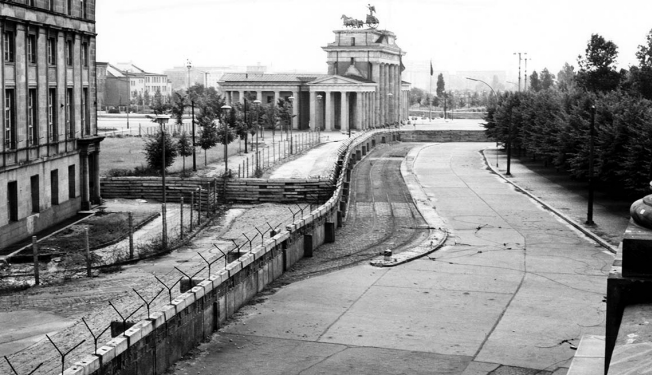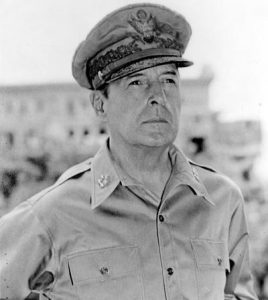After the establishment of the GDR (German Democratic Republic) and the FRG (Federal Republic of Germany) in 1949 at the dawn of the Cold War, a prolonged tension between East Germany and West Germany took place. Distracted by their intentions to push the Allies out of West Berlin, the GDR was initially unaware that the citizens of the East were beginning to travel towards checkpoints to leave East Germany.1 The eventual influx of East German citizens funneling into West Berlin through various forms would eventually be recognized as a dangerous factor that threatened the existence of the GDR, leading them to make breakneck decisions.
By the 1950s, the post-war East German economy was still left broken following the war. Although this itself was a large problem, there had been an unforeseen factor. Although the East German state was attempting to socialize their economy with centralized production and distribution of capital goods, its citizens were still suffering from a lack of basic consumer goods. This factor of a broken economy motivated citizens to begin travelling from East Germany to West Germany via the checkpoints in East Berlin. The departure of these citizens developed into what would be considered a large-scale brain drain of the Eastern state. Many of the citizens that had been moving to West Germany through Berlin were citizens around the age of twenty-five. These young people were the primary workers of the East German economy, and they were leaving for the West, seeing their future as best served in West Germany. The West German economy in the 1950s became known as “The Economic Miracle,” as a phoenix rising from the ashes of World War II. The workers draining from East Germany to the West contributed to the declining economic condition of the GDR, and a continued drain threatened the existence of the Eastern state as a whole. Because of the slow trickle of citizens draining from the East in the early to mid 1950s, Stalin–who at the time was much more concerned with pushing the Americans out of West Berlin–was not aware of this loss of citizens. But this leak eventually turn into about 3.5 million East Germans defecting from the GDR by the late 50s and early 1960. By 1961, the leader of the Soviet Union, Nikita Khrushchev, recognized that something had to be done to address this problem.2
The night of the formation of the Wall was August 12th, 1961. Diplomats from the West at the time were hearing rumors that the East was going to take some kind of action to increase the difficulty of crossing between East and West Berlin. It was around midnight that the East German troops and workers began to create a barrier and close off the border. The barrier was especially shocking as it was put up with such speed, being erected by the morning after it had begun. Additionally, the barrier was put up with no actual disruption of the agreement between them and the Allies, so legally, the barrier was allowed. This made many citizens outraged as it left some East Berliners on the West side and others on the East.

The fence and small walls would eventually be replaced with a ten-to-thirteen-foot-high cement barrier and encircle West Berlin in its entirety.3 But despite the barrier, many East German citizens would try to escape with the majority ending up dead and the rest being capture and jailed. To the satisfaction of East Germany, they successfully cut off the draining of their citizens to that of a mere trickle and secured the existence of the “people’s republic.”4 The Berlin Wall forever after became the most prominent symbol of the Cold War. It was before this Wall and because of this Wall that two American presidents famously claimed the superiority of American values over that of “communism.” With Kennedy, we all became Berliners, and with Reagan, we applauded when Berliners began to “tear down this wall.”
- Norman Gelb, The Berlin Wall: Kennedy, Khrushchev and a Showdown in the Heart of Europe (Simon & Schuster, 1988), 34-35. ↵
- Frederick Taylor, The Berlin Wall: A World Divided (HarperCollins, May 2007), 17-20. ↵
- Salem Press Encyclopedia, January 2016, s.v. “Berlin Wall,” by Herbert Luft. ↵
- Wole Soyinka, “Beyond the Berlin Wall,” Transition, no. 51 (1991). 1-2. ↵



34 comments
Alexandra Cantu
This is a really amazing article. I have heard of the Berlin Wall, but I never really knew information of why it was built in the first place. After reading this, it is a really sad story, that these people were literally trapped in east Germany . Congratulations on getting published this was a fascinating article!
Kimberly Simmons
The Berlin Wall was built with such speed and determination — it’s amazing that it held such a strong message. I didn’t have much prior knowledge about the subject matter, so it was nice to learn about history of the Soviets, WWII, and the construction of the wall. The article itself was very informative; the author did a good job of piecing it together.
Auroara-Juhl Nikkels
Your article was very well written. We all learn about the Berlin Wall in school. We all hear about it in passing and generally knoe about it. But rarely do people know the details behind the wall and what the people went though behind the wall. People were basically held prisoner behind the wall. When it came down, it was momentous. A very important act.
Zeresh Haman
This is a really amazing and interesting article. I have heard of the Berlin Wall, but I never got the background information of why it was built in the first place. After reading this, it is a really sad story, that these people were literally trapped in East Germany. The building of the Berlin Wall is on of the most famous events in history. I think this article was well organized and put together.
Alexandria Martinez
It is astounding to think of a government system that would allow for the complete surrounding of their city without letting their citizens leave. Going so far as to kill people who would try to escape is astounding. Despite hearing a few things as to why the wall was put up, I didn’t know all of the facts stated in this article. I was unaware of the amount of people who left the GDR. This was informative as to why the wall was built in the first place.
Sebastian Castro Ramos
The speed with which the Berlin Wall was built amazes me, and I am sure also amazed East Berliners at the time. It rapidly became a symbol of separation and oppression to the people of Germany. It must have been shocking to realize you couldn’t access West Germany anymore, and that you would have to live under a failing government. Excellent article, I really enjoyed reading it.
Clarissa Bustamante
I really enjoyed this article. It was very interesting to know that all of this was occurring during the Civil War. The cover image sent a strong image and also how it described it was a death strip. This article is very well put together, it was great how it wasn’t just a bunch of facts and you turned it into a great informative story. The use of numbers really showed how much research you did for this topic and I think it really strengthened your article.
Crystalrose Quintero
The cover image had such a strong message in its description by stating that the wall was a death strip. I really enjoyed this article In that it just didn’t throw out facts but told a very informative story in sequential order. It was a strong statement to read that the Berlin Wall was the symbol of the cold war.
Richard Navarro
This reminds me a lot of what President Donald Trump is trying to do with Mexico and the United States. However, it is not the country that is being split. I can’t imagine how many people went without their families for years. People were so desperate to get over that 10 to 13 foot wall that they helplessly ended their lives because of it. A very interesting article. I like how you focused more on the beginning rather than the construction itself.
Lisa Varela
My grandfather was born in Germany so, when I was young my family and I took a trip to Germany and we stopped in Berlin. I was told and saw a lot of history that impacted not only Germany but the world as well, however, it wasn’t until years later that I came to understand just how important the places we had seen on the trip truly were to history. Great article!